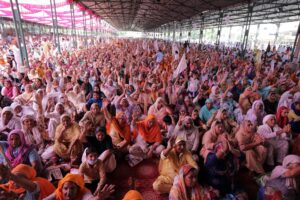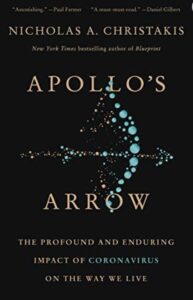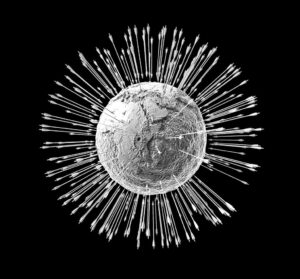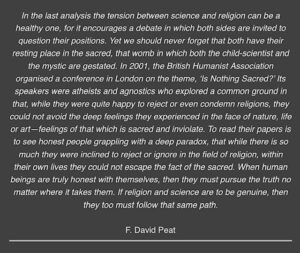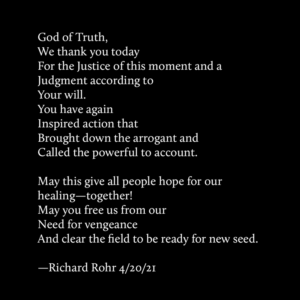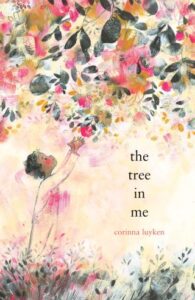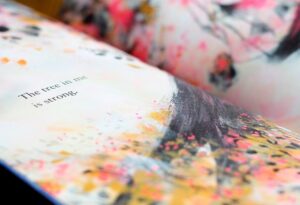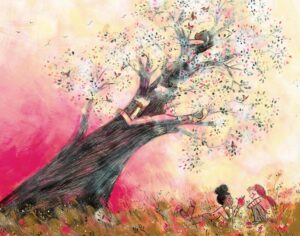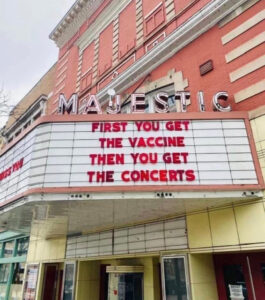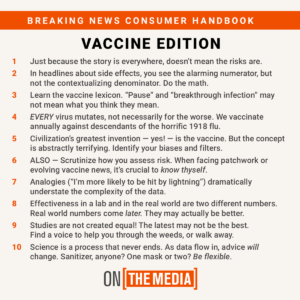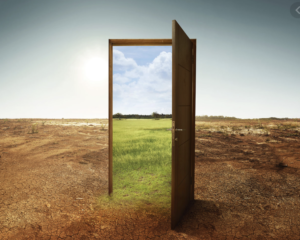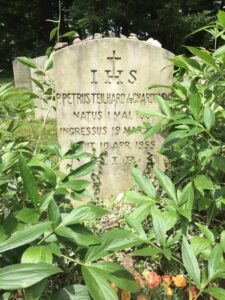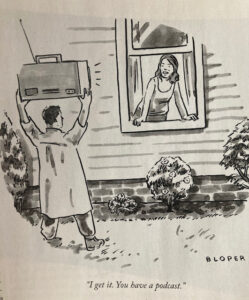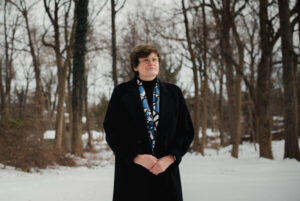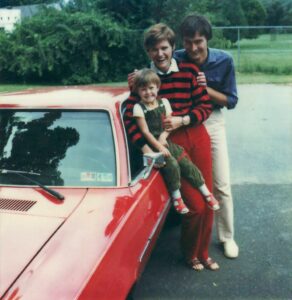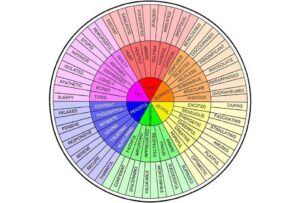…and remember.
April 29, 2021Never let the fear of this world distract you from the immense beauty, infinite mystery & deep love all around you.
-Jennifer Rose
I
N
H
A
L
E
Patience. Presence. Prayer. Moab. And India.
The 21st century, the United States of America, capitalism, our churches and our political parties, and all the rest are passing away. We might recall the Buddhist heart sutra “Gone, gone, entirely gone” when we watch old movies—even celebrities and stars die. We can take this as a morbid lesson, or we can receive it as the truth ahead of time, so we’re not surprised, disappointed, and angry when it happens in our generation.
In times like these, our prayer may need to be expressive and embodied, visceral and vocal. How else can we pray with our immense anger and grief? How else can we pray about ecocide, about the death that humanity is unleashing upon Mother Earth and upon ourselves? How else can we break through our inertia and despair, so that we don’t shut down and go numb? – Fr. Richard Rohr
Walk. And pray. Contemplation.
Terry Tempest Williams
Who have we become? “This is a violation against ever woman and life-giver,” says Regina Lopez-Whiteskunk
A prehistoric petroglyph panel near Moab was defaced with the words ‘White Power’
The Bureau of Land Mangement is offering a $10,000 reward for relevant information about those who committed the vandalism
Salk Lake Tribune
Known as the Birthing Rock, the boulder features petroglyphs on all four of its accessible sides that date from the Archaic period to more modern Ute inscriptions, including dozens of ancestral Puebloan-era images, including a woman giving birth.
Sometime late Monday night or early Tuesday, however, vandals descended on the roadside rock and scratched it with obscenities, a crude penis and the words “white power” directly over the top of two anthropomorphic figures.
The Bureau of Land Management is offering a $10,000 reward for information leading to the arrest and conviction of those responsible for the vandalism.
https://www.sltrib.com/news/environment/2021/04/28/prehistoric-petroglyph/801-237-2900/
Al Jazeera English
‘India’s devastating second wave was fuelled by a series of crowded events, including mass rallies addressed by PM Narendra Modi, religious holidays and pilgrimages on the Ganges river — in pictures.’
India opened too quickly, no masks, large gatherings, few vaccinations…by choice.
331 (M) people in the U.S. Masks eased outside. Be wise. Distance. Small groups. Oregon is surging and variants are circulating. And please. Read the science. Vaccinate. -dayle
“They had no idea the virus could spread this fast.”
Fear and Loss: Inside India’s Coronavirus Crisis
The Dailey
New York Times
Jeffrey Gettleman, The South Asia bureau chief for The New York Times, based in Delhi.
Living with COVID as endemic.
April 28, 2021COVID is here to stay. With so many hesitant, and anti-vaxxers, it is now believed we will never reach herd immunity in this country.
What will the psychology and existential remains be as we settle into a new existence? -dayle
Dr. David Pate, Idaho COVID task force:
“I am very pleased with many of the efforts being made to address vaccine hesitancy, but we lost our chance a year ago to rid ourselves of this virus and unfortunately, I suspect we are unlikely to reach herd immunity given more and more evidence that prior infection is not going to be as protective as we had hoped, the unwillingness of people to follow guidance that would allow us to control disease transmission and therefore the evolution of variants, and the currently inadequate numbers of people willing to be vaccinated. Most likely, we just have to prepare for SARS-CoV-2 to be endemic.”
[Christakis is a physician and sociologist who explores the ancient origins and modern implications of human nature. He directs the Human Nature Lab at Yale University, where he is the Sterling Professor of Social and Natural Science in the department of sociology, medicine, ecology and evolutionary biology, statistics and date science and biomedical engineering.’]
‘…and frequent funeral piles of the dead were continually burning.’ -Homer, The Iliad
‘Humanity has but three great enemies: fever, famine, and war; of these by far the greatest, by far the most terrible, fever.’ Sir William Osler [1896]
New York Times
“The story changes daily and so do the prognostications about where this pandemic is going, how it will end (insofar as it ever does end), what toll it will take and whether it will serve as a critical inflection point, or not, for how we humans live on this planet. Will it deliver a deeply absorbed lesson, not just on disease preparedness but also on climate change and vanishing biological diversity, the three greatest problems we are facing and causing? Or will it drain away and be forgotten, as the 1918 influenza pandemic largely drained away, its lessons ignored and its grim particulars seemingly blocked from public memory for decades? Along with the prognostications we’re also getting postgnostications (it’s not my neologism), efforts to understand the past by predicting what happened: Where did this virus come from? A wild animal? Which animal? How did it manage to be so nefariously well adapted for human infection? How did it get into us at the start? Has it evolved since?
Given that Christakis is a physician and sociologist, the co-author of an earlier book about social networks and how they shape lives, the co-author also of an influential paper on “social contagion theory” and the co-director of the Institute for Network Science at Yale, one naturally expects that “network science” might afford him special insight into Covid-19.
LoVe & Renewal
April 26, 2021P
I
N
K
M O O N
This can manifest as a difficult moon as aspects of wanting more freedom to move forward meet with limiting influences and hard work.
Resiliency and flexibility are very helpful during this time especially around unexpected changes, events, reversals and decisions. Be careful with being impulsive.
Put some practical thought into any important choices around changing or adjusting anything major in your life. Take this opportunity to tap into your own wisdom as well as to find a new courage for those changes you do want to make.
You may experience an inner tension that brings up any imbalance you feel around time – how you spend it, how you use your energy etc.
Use this full moon time to take an inventory of what you value so you can set intentions and get support around what is most important to you. We are all ready to move on, to go forward and experience more freedom.
And yet we are being pulled back to take yet another look at what needs to change, to be healed and to be released.
So, be patient, ask what can be healed, and do the work so you can move into the future from a solid and practical foundation and not one built on impulsive behavior. ~Lena
Power Path
thepowerpath.com
The full Moon in Scorpio is Monday, April 26 at 9:33 PM Mountain Daylight Time
“In a very real way, the shift from a pagan earth-based spirituality to the patriarchal Christian notion of man’s right to dominate nature was a causal factor contributing to what would one day become our environmental crisis.”
-Marianne Williamson
F O R E A R T H D A Y
Award winning film at the 2021 Sun Valley Film Festival. NatGeo photographer Brian Skerry discovers a profound whale culture filming the series over three years in 24 aqueous locations across the planet. Astonishingly beautiful and tender. Streaming on Disney+. #EarthDay2021
Executive Producer James Cameron: “It’s so important for people to understand and illuminate how these creatures think, how they feel, what their emotion is like, what their society is like, because we won’t protect what we don’t love.” [Deadline]
‘The Eurocentric view of property ownership requires to see land as disconnected from us, separating from the source of life. The Indigenous view, kcyie, recognizes our obligation to care for the land as we would care for our human relatives.’
-Fr. Richard Rohr
Climate Journalist Eric Holthaus:
“A Green New Deal is inevitable – if we keep on fighting for it.
This is a terrifying moment because it is so important, and the people who realize that – people on the front lines of climate violence around the world – are being told to wait.
The anger in these words I’m writing now is because I know that what needs to happen isn’t hard at all once we get enough people demanding it.
The best thing of all is there’s a shared vision of a world where every living thing matters. Building upon hundreds of years of wisdom, struggle, and science, we know that a flourishing human civilization is no longer possible without it being rooted in ecology and reverence for the interconnection and interdependence of us all on each other.
And, as it turns out, that vision of a better world is really really popular.
We have everything we need to make this happen. Don’t let anyone tell you that you need to wait any longer for a livable planet.”
5 years.
April 21, 2021A lot can change in five years. Or nothing at all.
Prince
June 7, 1958 to April 21, 2016
“Peace is more than the absence of war.”
Father Richard Rohr wrote this prayer yesterday after Minneapolis police officer Derek Chauvin was found guilty of the murder of George Floyd. Richard and the Daily Meditations editorial team invite you to pray these words, along with your own, as your contemplative practice today.
Center for Action and Contemplation
Albuquerque, New Mexico
‘Love trees? Love love? “The Tree in Me” is for you – a tender painted poem about growing our capacity for joy, strength, and love.’ -Maria Popova
Walt Whitman, who considered trees the profoundest teachers in how to best be human, remembered the woman he loved and respected above all others as that rare person who was “entirely herself; as simple as nature; true, honest; beautiful as a tree is tall, leafy, rich, full, free — is a tree.”
As the child looks up to face a young woman — who could be a mother or a sister or a first love or the school janitor or the Vice President — the book ends with a subtle affirmation of William Blake’s timeless tree-tinted insistence that we see not what we look at but what we are.
The tree in me
is seed and blossom,
bark and stump…
part shade,
and part sun.
brain pickings.org
Make a cup of tea…and listen.
Resmaa Menakem (MSW, LICSW, SEP) teaches workshops on Cultural Somatics for audiences of African Americans, European Americans, and police officers. He is also a therapist in private practice, and a senior fellow at The Meadows. His New York Times best-selling book is My Grandmother’s Hands: Racialized Trauma and the Pathway to Mending Our Hearts and Bodies.
Resmaa Menakem
‘Notice the Rage; Notice the Silence’
Across the past year, and now as the murder trial of Derek Chauvin unfolds with Minneapolis in fresh pain and turmoil, we return again to the grounding insights of Resmaa Menakem. He is a Minneapolis-based therapist and trauma specialist who activates the wisdom of elders, and very new science, about how all of us carry in our bodies the history and traumas behind everything we collapse into the word “race.” We offer up his intelligence on changing ourselves at a cellular level — practices towards the transformed reality most of us long to inhabit.
Host Krista Tippett:
‘Across the past year, and now as the murder trial of Derek Chauvin unfolds, with Minneapolis in fresh pain and turmoil, I return again and again to the grounding insights of Resmaa Menakem. He is a Minneapolis-based therapist and trauma specialist who activates the wisdom of elders, and very new science, about how all of us carry in our bodies the history and traumas behind everything we collapse into the word “race.” We offer up Resmaa’s intelligence anew on changing ourselves at a cellular level — practices towards the transformed reality I believe most of us long to inhabit.’
More from Krista:
‘Ever after, when I use the word “we” or “us,” I understand in a whole new way that I do so in a White body … I hold that knowledge together with my clarity that when time becomes history, the generations for whom we are the ancestors will see an “us.”’
‘…enough of us are preparing to be the generation, in bodies of every color, after so many generations of betrayal & blindness, to step onto that long arc of the moral universe—bending it towards justice & the Beloved Community.”
Menakem:
‘When we’re talking about trauma, when we’re talking about historical trauma, intergenerational trauma, persistent institutional trauma — and personal traumas, whether that be childhood, adolescence, or adulthood — those things, when they are left constricted, you begin to be shaped around the constriction. And it is wordless. Time decontextualizes trauma. So when my grandmother is saying that, I need to pay attention to that. And for her, it’s decontextualized, so she doesn’t even have a context for it.
Bodies of culture. That’s right. And so one of the things that happens with the vagal nerve — there’s two. There’s the vagal nerve — I call that the soul nerve — and then there’s a muscle, the psoas muscle. That psoas is a beast, because the psoas, what it does is, it connects the top part of the body with the bottom part of the body. It also — if you’re braced, it also manages whether or not you mobilize or immobilize. And if you’re born to people who are already braced, you pick up in your psoas this kind of locking down, this kind of bracing, decontextualized.
And so what I’ve been talking to people about is, how do we begin to get the reps in with those pieces? So you’re gonna need time to condition your body to be able to deal with the aches, deal with the doubt, deal with all of that difficulty. You’re gonna have to get up against your own suffering’s edge, before the transformation happens. But you need to condition that. Why do we think that when we talk about race, that’s any different — for me to say, “We’re gonna have a white body supremacy talk; deal with the root of this stuff”?’
Vaccines, Journalism’s Implicit Bias & Good News
April 18, 2021Madison, Wisconsin
Posted on twitter, Sunday, April 18th:
‘The Israeli and UK experience show that once the population is 2-3 wks out after 50% of adults are vaccinated (something the U.S. hit this wknd), then you get strong suppression of the infection.’ @MartyMakary
‘Very good news.’ @VPrasadMDMPH
“…find a voice to help you through the weeds, or walk away.”
“…we have this implicit bias in journalism toward what’s new and not what’s true.”Important segment this week from On The Media about the J&J pause, science, and how it’s reported. It speaks to media literacy, as well as to the sensationalism of the news. -dayle
Jab Duex!
April 15, 2021Please vaccinate.
Reading so many accounts of folks who are adamant against vaccination for various reasons, most based on misinformation and disinformation.
Be proactive. Be media literate. Do your research. Talk to your doctors.
For those of us who believe and are grateful for science, if others opt out, this compromises the rest of us who want to acclimate back into an open society, culture, and community void of fear of being around others because of overlying ignorance. Put the politics aside and do your part, not only for our national community, but the global community. Do. Your. Part. -dayle
Love this too much. ღ
April 13, 2021[Released April 13, 2021]
From Mick:
I wanted to share this song that I wrote about eventually coming out of lockdown, with some much needed optimism – thank you to Dave Grohl for jumping on drums, bass and guitar, it was a lot of fun working with you on this – hope you all enjoy Eazy Sleazy!
Still rockin’ at 77, so, yeah…long live rock n’ roll.♩-dayle
Our beautiful diversity. 
A celebration from Cat.
Ramadan is a time of spiritual reflection, self-improvement, and heightened devotion and worship. Muslims are expected to put more effort into following the teachings of Islam. The fast (sawm) begins at dawn and ends at sunset. Ramadan commemorates the time when the prophet Mohammad revealed the religion’s holy text—the Quran—1,400 years ago.
✿✿✿✿✿✿✿
Animated version of Yusuf Islam’s [Cat Stevens] ‘Ramadan Moon’ song.
Vaccines, Variants, Vacations
Winter is on my head, but eternal spring is my heart — Victor Hugo
Response Ability | Vaccines, Variants, Vacations — and what do I think about the new J&J issue.
by, Jordan L. Shlain MD
Welcome to Dispatch #18, which falls on the anniversary of my New York volunteer effort at a hastily-built FEMA tent on the cold sidewalk outside of Columbia’s Washington Heights Emergency Room where I was asked to triage who was sick enough to be admitted to the overflowing ER and who should go home. All I had was a cheap, disposable plastic stethoscope, a pulse oximeter, a blood pressure cuff, a thermometer, and an iPad that had live translators. I had no ability to do a COVID test — at the time they were reserved for healthcare workers in the other tent. The whole episode was eerie. I’ve added some video clips and photos at the end if you’re interested.
It’s April and we’re now vaccinating a few million people per day. This is great! Full stop. It was only 5 months ago we were in the global doghouse — and now we’re back. The US is on track to have all adults immunized by summer. While there is much to be grateful for, we can’t turn a blind eye to the access disparity and the greater issues that it represents. If you want to read the details of the vaccine section, know this: get any of the three vaccines being offered in the US — they all prevent severe disease and death. On J&J — what you need to know is the risk of dying from COVID (Covid has already killed 1,712 out of every million Americans) is much greater than the risk of a blood clot (6 in 6,800,000 or 1.13 out of every million Americans). This is real, yet it must be taken in context-see Vaccine section.
Lots of new questions and answers as we trundle through what I hope is the penultimate act of this pandemic. We are seeing rising cases in certain states with a dark cloud of variants obscuring a clear path to herd immunity. Kids are now the major focus of a vaccination effort — and if we want their buy in, politicians and public health professionals need to get on TikTok or Snap! Most Gen Zs want to wait and see what happens.
Cases are starting to rise in the US and there is a real possibility of a fourth wave, albeit not as gnarly as our summer wave, but real enough to strain the healthcare system — and with a younger demographic.
I’m more optimistic about the US than I have been in a long time, but we’re not there yet. We likey have a few more months of mask-wearing for those vaccinated in the U.S. The rest of the world will likely not be vaccinated for years — and this is a problem. The United States has a unique opportunity to show our magnanimity and help less fortunate countries get vaccinated. If we want to be the leaders of the free world, we have to act like it. Generosity is the most powerful form of influence.
OK — let’s get to it.
https://tincture.io/response-ability-vaccines-variants-vacations-dispatch-18-387e1a413b8f
It’s time.
April 10, 2021
Mindwalk/1991
Le Mont Saint-Michel
Some captures from the film…
Decisions
c
h
o
i
c
e
s
Consequences
Value thinking
7th generation choices
Systems thinking
Inherent proclivity to transcend
Co-evolution through creativity
S
H
I
V
A
=
L I F E D A N C E
“Life cannot be reduced.”
“Life feels itself.”
✹Qualities
✹Longings
✹Weaknesses
“Shall we go home?”
Yes.
F
R
A
N
C
E
“We are the works of all who came before.”
︶⁀°• •° ⁀︶
Pierre Teilhard de Chardin SJ died April 10th, 1955.
“The day will come when, after harnessing the ether, the winds, the tides, and gravitation, we shall harness for God the energies of ℒℴve❥. And, on that day, for the second time in the history of the world, man will have discovered fire.”
Barn in France. ♡
Kindness and Energy for La Luna
The New Moon in Aries is Sunday, April 11 at 8:30 PM Mountain Daylight Time (MDT)
This moon brings up the physical body, the condition of your health, re-evaluation of the structure of your self-care, and a reflection of what needs to change in your daily organization of life. Be sure to take some time to reflect and evaluate. The dynamic energy of this new moon will give much fuel and ignition to any changes and choices you make for improvement however it can also trigger negative reactions, impatience and irritability as you face uncomfortable truths and challenges. Don’t take your discomfort out on others and remember to be kind no matter what.
Make sure not to make decisions out of fear or being pressured by others. Take your time, check in with your own intuition and what feels right. A new moon always supports personal decisions that must include your own timing, not pressured by others.
There is a part of us during this volatile and dynamic time that wants to see justice around what was done to us and how we have suffered either personally or collectively in the past. There is potential anger and attitude towards righting the wrongs and our personalities would love to see the alleged perpetrators go up in flames. However, the responsible and mature thing to do is to forgive the past, let go of your attachment to suffering and harness this fiery, creative energy to move yourself forward in the most positive way.
:)
April 9, 2021[The New Yorker]
There are currently 850,000 active podcasts and over 47 million podcast episodes. More than half of all US consumers above the age of 12 listen to podcasts.
Apple Podcasts … features more than 500,000 active podcasts, including content in more than 100 languages.
[Fast Company/Podcast Insights]
(S)hero.
April 8, 2021
The champion of mRNA |
Katalin Kariko in February at her home in Jenkintown, Pa.Hannah Yoon
Must read.
The New Yorker
Kati Kariko Helped Shield the World From the Coronavirus.
Collaborating with devoted colleagues, Dr. Kariko laid the groundwork for the mRNA vaccines turning the tide of the pandemic.
by Gina Kolata
| Messenger RNA (mRNA) technology is the bedrock of the vaccines made by Pfizer-BioNTech and Moderna. It’s the genetic script that carries instructions to the protein-making machinery of cells. |
| For its newly prominent role protecting the world from the coronavirus pandemic, we can thank Katalin Kariko, a Hungarian-born scientist, and her close collaborator, Dr. Drew Weissman. |
| Dr. Kariko, 66, has focused on mRNA for her entire career. She was convinced it could be used to instruct cells to make their own medicines, including vaccines. |
| For decades, she clung to the fringes of academia in the United States, struggling to find a permanent position and never making more than $60,000 a year. Her unorthodox ideas seemed wild and fanciful to her peers, and she struggled to get grants. |
| After her research stalled — she could make mRNA work in a petri dish, but not in living mice — Dr. Kariko found a clue in an experiment’s control group. A single molecule called pseudouridine helped evade the immune response and deliver the protein-instruction payload. |
|
| Last November, when the first stunning results from the mRNA coronavirus vaccines came in, Dr. Kariko turned to her husband. “Oh, it works,” she said. “I thought so.” |
| To celebrate, our colleague Gina Kolata reports, Dr. Kariko ate an entire box of Goobers chocolate-covered peanuts. By herself. |
Credit…via Kati Kariko
She grew up in Hungary, daughter of a butcher. She decided she wanted to be a scientist, although she had never met one. She moved to the United States in her 20s, but for decades never found a permanent position, instead clinging to the fringes of academia.
Now Katalin Kariko, 66, known to colleagues as Kati, has emerged as one of the heroes of Covid-19 vaccine development. Her work, with her close collaborator, Dr. Drew Weissman of the University of Pennsylvania, laid the foundation for the stunningly successful vaccines made by Pfizer-BioNTech and Moderna.
For her entire career, Dr. Kariko has focused on messenger RNA, or mRNA — the genetic script that carries DNA instructions to each cell’s protein-making machinery. She was convinced mRNA could be used to instruct cells to make their own medicines, including vaccines.
But for many years her career at the University of Pennsylvania was fragile. She migrated from lab to lab, relying on one senior scientist after another to take her in. She never made more than $60,000 a year.
By all accounts intense and single-minded, Dr. Kariko lives for “the bench” — the spot in the lab where she works. She cares little for fame. “The bench is there, the science is good,” she shrugged in a recent interview. “Who cares?”
Dr. Anthony Fauci, director of the National Institutes of Allergy and infectious Diseases, knows Dr. Kariko’s work. “She was, in a positive sense, kind of obsessed with the concept of messenger RNA,” he said.
Dr. Kariko’s struggles to stay afloat in academia have a familiar ring to scientists. She needed grants to pursue ideas that seemed wild and fanciful. She did not get them, even as more mundane research was rewarded.
“When your idea is against the conventional wisdom that makes sense to the star chamber, it is very hard to break out,” said Dr. David Langer, a neurosurgeon who has worked with Dr. Kariko.
Dr. Kariko’s ideas about mRNA were definitely unorthodox. Increasingly, they also seem to have been prescient.
“It’s going to be transforming,” Dr. Fauci said of mRNA research. “It is already transforming for Covid-19, but also for other vaccines. H.I.V. — people in the field are already excited. Influenza, malaria.”
‘I Felt Like a God’
For Dr. Kariko, most every day was a day in the lab. “You are not going to work — you are going to have fun,” her husband, Bela Francia, manager of an apartment complex, used to tell her as she dashed back to the office on evenings and weekends. He once calculated that her endless workdays meant she was earning about a dollar an hour.
For many scientists, a new discovery is followed by a plan to make money, to form a company and get a patent. But not for Dr. Kariko. “That’s the furthest thing from Kate’s mind,” Dr. Langer said.
She grew up in the small Hungarian town of Kisujszallas. She earned a Ph.D. at the University of Szeged and worked as a postdoctoral fellow at its Biological Research Center.
In 1985, when the university’s research program ran out of money, Dr. Kariko, her husband, and 2-year-old daughter, Susan, moved to Philadelphia for a job as a postdoctoral student at Temple University. Because the Hungarian government only allowed them to take $100 out of the country, she and her husband sewed £900 (roughly $1,246 today) into Susan’s teddy bear. (Susan grew up to be a two-time Olympic gold medal winner in rowing.)
When Dr. Kariko started, it was early days in the mRNA field. Even the most basic tasks were difficult, if not impossible. How do you make RNA molecules in a lab? How do you get mRNA into cells of the body?
In 1989, she landed a job with Dr. Elliot Barnathan, then a cardiologist at the University of Pennsylvania. It was a low-level position, research assistant professor, and never meant to lead to a permanent tenured position. She was supposed to be supported by grant money, but none came in.
She and Dr. Barnathan planned to insert mRNA into cells, inducing them to make new proteins. In one of the first experiments, they hoped to use the strategy to instruct cells to make a protein called the urokinase receptor. If the experiment worked, they would detect the new protein with a radioactive molecule that would be drawn to the receptor.
“Most people laughed at us,” Dr. Barnathan said.
One fateful day, the two scientists hovered over a dot-matrix printer in a narrow room at the end of a long hall. A gamma counter, needed to track the radioactive molecule, was attached to a printer. It began to spew data.
Their detector had found new proteins produced by cells that were never supposed to make them — suggesting that mRNA could be used to direct any cell to make any protein, at will.
“I felt like a god,” Dr. Kariko recalled.
She and Dr. Barnathan were on fire with ideas. Maybe they could use mRNA to improve blood vessels for heart bypass surgery. Perhaps they could even use the procedure to extend the life span of human cells.
Dr. Barnathan, though, soon left the university, accepting a position at a biotech firm, and Dr. Kariko was left without a lab or financial support. She could stay at Penn only if she found another lab to take her on. “They expected I would quit,” she said.
Universities only support low-level Ph.D.s for a limited amount of time, Dr. Langer said: “If they don’t get a grant, they will let them go.” Dr. Kariko “was not a great grant writer,” and at that point “mRNA was more of an idea,” he said.
But Dr. Langer knew Dr. Kariko from his days as a medical resident, when he had worked in Dr. Barnathan’s lab. Dr. Langer urged the head of the neurosurgery department to give Dr. Kariko’s research a chance. “He saved me,” she said.
Dr. Langer thinks it was Dr. Kariko who saved him — from the kind of thinking that dooms so many scientists.
Working with her, he realized that one key to real scientific understanding is to design experiments that always tell you something, even if it is something you don’t want to hear. The crucial data often come from the control, he learned — the part of the experiment that involves a dummy substance for comparison.
“There’s a tendency when scientists are looking at data to try to validate their own idea,” Dr. Langer said. “The best scientists try to prove themselves wrong. Kate’s genius was a willingness to accept failure and keep trying, and her ability to answer questions people were not smart enough to ask.”
Dr. Langer hoped to use mRNA to treat patients who developed blood clots following brain surgery, often resulting in strokes. His idea was to get cells in blood vessels to make nitric oxide, a substance that dilates blood vessels, but has a half-life of milliseconds. Doctors can’t just inject patients with it.
He and Dr. Kariko tried their mRNA on isolated blood vessels used to study strokes. It failed. They trudged through snow in Buffalo, N.Y., to try it in a laboratory with rabbits prone to strokes. Failure again.
And then Dr. Langer left the university, and the department chairman said he was leaving as well. Dr. Kariko again was without a lab and without funds for research.
A meeting at a photocopying machine changed that. Dr. Weissman happened by, and she struck up a conversation. “I said, ‘I am an RNA scientist — I can make anything with mRNA,’” Dr. Kariko recalled.
Dr. Weissman told her he wanted to make a vaccine against H.I.V. “I said, ‘Yeah, yeah, I can do it,’” Dr. Kariko said.
Despite her bravado, her research on mRNA had stalled. She could make mRNA molecules that instructed cells in petri dishes to make the protein of her choice. But the mRNA did not work in living mice.
“Nobody knew why,” Dr. Weissman said. “All we knew was that the mice got sick. Their fur got ruffled, they hunched up, they stopped eating, they stopped running.”
It turned out that the immune system recognizes invading microbes by detecting their mRNA and responding with inflammation. The scientists’ mRNA injections looked to the immune system like an invasion of pathogens.
But with that answer came another puzzle. Every cell in every person’s body makes mRNA, and the immune system turns a blind eye. “Why is the mRNA I made different?” Dr. Kariko wondered.
A control in an experiment finally provided a clue. Dr. Kariko and Dr. Weissman noticed their mRNA caused an immune overreaction. But the control molecules, another form of RNA in the human body — so-called transfer RNA, or tRNA — did not.
A molecule called pseudouridine in tRNA allowed it to evade the immune response. As it turned out, naturally occurring human mRNA also contains the molecule.
Added to the mRNA made by Dr. Kariko and Dr. Weissman, the molecule did the same — and also made the mRNA much more powerful, directing the synthesis of 10 times as much protein in each cell.
The idea that adding pseudouridine to mRNA protected it from the body’s immune system was a basic scientific discovery with a wide range of thrilling applications. It meant that mRNA could be used to alter the functions of cells without prompting an immune system attack.
“We both started writing grants,” Dr. Weissman said. “We didn’t get most of them. People were not interested in mRNA. The people who reviewed the grants said mRNA will not be a good therapeutic, so don’t bother.’”
Leading scientific journals rejected their work. When the research finally was published, in Immunity, it got little attention.
Dr. Weissman and Dr. Kariko then showed they could induce an animal — a monkey — to make a protein they had selected. In this case, they injected monkeys with mRNA for erythropoietin, a protein that stimulates the body to make red blood cells. The animals’ red blood cell counts soared.
The scientists thought the same method could be used to prompt the body to make any protein drug, like insulin or other hormones or some of the new diabetes drugs. Crucially, mRNA also could be used to make vaccines unlike any seen before.
Instead of injecting a piece of a virus into the body, doctors could inject mRNA that would instruct cells to briefly make that part of the virus.
“We talked to pharmaceutical companies and venture capitalists. No one cared,” Dr. Weissman said. “We were screaming a lot, but no one would listen.”
Eventually, though, two biotech companies took notice of the work: Moderna, in the United States, and BioNTech, in Germany. Pfizer partnered with BioNTech, and the two now help fund Dr. Weissman’s lab.
‘Oh, It Works’
Soon clinical trials of an mRNA flu vaccine were underway, and there were efforts to build new vaccines against cytomegalovirus and the Zika virus, among others. Then came the coronavirus.
Researchers had known for 20 years that the crucial feature of any coronavirus is the spike protein sitting on its surface, which allows the virus to inject itself into human cells. It was a fat target for an mRNA vaccine.
Chinese scientists posted the genetic sequence of the virus ravaging Wuhan in January 2020, and researchers everywhere went to work. BioNTech designed its mRNA vaccine in hours; Moderna designed its in two days.
The idea for both vaccines was to introduce mRNA into the body that would briefly instruct human cells to produce the coronavirus’s spike protein. The immune system would see the protein, recognize it as alien, and learn to attack the coronavirus if it ever appeared in the body.
The vaccines, though, needed a lipid bubble to encase the mRNA and carry it to the cells that it would enter. The vehicle came quickly, based on 25 years of work by multiple scientists, including Pieter Cullis of the University of British Columbia.
Scientists also needed to isolate the virus’s spike protein from the bounty of genetic data provided by Chinese researchers. Dr. Barney Graham, of the National Institutes of Health, and Jason McClellan, of the University of Texas at Austin, solved that problem in short order.
Testing the quickly designed vaccines required a monumental effort by companies and the National Institutes of Health. But Dr. Kariko had no doubts.
On Nov. 8, the first results of the Pfizer-BioNTech study came in, showing that the mRNA vaccine offered powerful immunity to the new virus. Dr. Kariko turned to her husband. “Oh, it works,” she said. “I thought so.”
To celebrate, she ate an entire box of Goobers chocolate-covered peanuts. By herself.
Dr. Weissman celebrated with his family, ordering takeout dinner from an Italian restaurant, “with wine,” he said. Deep down, he was awed.
“My dream was always that we develop something in the lab that helps people,” Dr. Weissman said. “I’ve satisfied my life’s dream.”
Dr. Kariko and Dr. Weissman were vaccinated on Dec. 18 at the University of Pennsylvania. Their inoculations turned into a press event, and as the cameras flashed, she began to feel uncharacteristically overwhelmed.
A senior administrator told the doctors and nurses rolling up their sleeves for shots that the scientists whose research made the vaccine possible were present, and they all clapped. Dr. Kariko wept.
Things could have gone so differently, for the scientists and for the world, Dr. Langer said. “There are probably many people like her who failed,” he said.
~
he·ro | \ ˈhir-(ˌ)ō
Yeah. Dr. Kariko is a (s)hero. Remember her name. -dayle
Re-Entry
April 7, 2021Please vaccinate.
“Everyone’s tired and traumatized. Normal life is coming back slow and strange, like plant life after a nuclear blast, and we won’t know the scale of the damage until something like safety feels possible. It’s okay to feel numb right now.”
-Laurie Penny
I am suffering bereavement and feel cut off from normal life. Can you give me perspective?
Grief hurts so badly because it is about something permanent, writes advice columnist Eleanor Gordon-Smith, but you won’t float forever

I am suffering. Though it has been several months now, most days it still feels like more than I can bear.
I feel cut off from the rest of normal life, as though I am floating, and I don’t know how to come back to normality without the person who I have lost. Please can you give some perspective?
Eleanor says: For finite creatures – who will without doubt experience loss and then in turn be lost – we do a very good job of isolating ourselves in that experience. We do a very good job of leaving each other alone in the one thing that actually unites us.
I know the strangely unplugged feeling you describe very well. The muffling of every sound; the sense of walking through an anaesthetised dream; the disobedience of the fact that garbage trucks are still beeping and dogs are still being walked in parks, as though you could possibly be expected to perceive – let alone return to – a world that has not stopped. It’s especially acute at your current moment, after a few months, when people stop asking how you’re doing and you might feel some pressure to “move on”.
But you already know there’s no place unmarred by grief for you to move on to. I think that’s why the pain is so bad when it hits; we know it’s about something permanent. There’s no future where our loved one is alive. So we get hit by one wave of pain for the fact that they’re gone, and another for the fact that they will never not be.
Why do friends discard me when I am no longer of use?
Read more
It’s enough to make you drown.
When I am drowning I get some comfort from knowing that almost every other person has been underwater too. Some are underwater with us right now, double-taking in the street when they think they see their person, suddenly needing to turn off music they’ve never before thought of as moving.
The pain never quite goes away. Since so much of ordinary life is built on the promise of painlessness, you may never quite feel fully part of it again.
But you won’t float forever. The acuteness of this pain can be its own kind of reality – a way of relating to the dogs in the park and the sounds of the street and the people still around you as gifts that are here for a moment and then wink away. It’s all here only for a moment. How astonishing that we would get to be here with it too.
Everybody from CS Lewis to the Queen has said that grief is the price we pay for love. It is a cosmic tragedy that we cannot have that love forever, but there is another, more fragile, more vivid kind of joy inside people who know that it will all one day be gone. The tragedy will never really leave you. But that joy will move in beside it. Some days the loss will be as fresh as if it happened yesterday, but some days you will catch yourself laughing.
Your terrible pain is not the opposite of life, or a sign that you are done living. It is what happens when you see life for what it is: it’s a gift, and then it ends.
I wish you luck through your days. I – and millions of us – are with you, being tossed back and forth on the tragedy and the luck that we get to have days at all.



